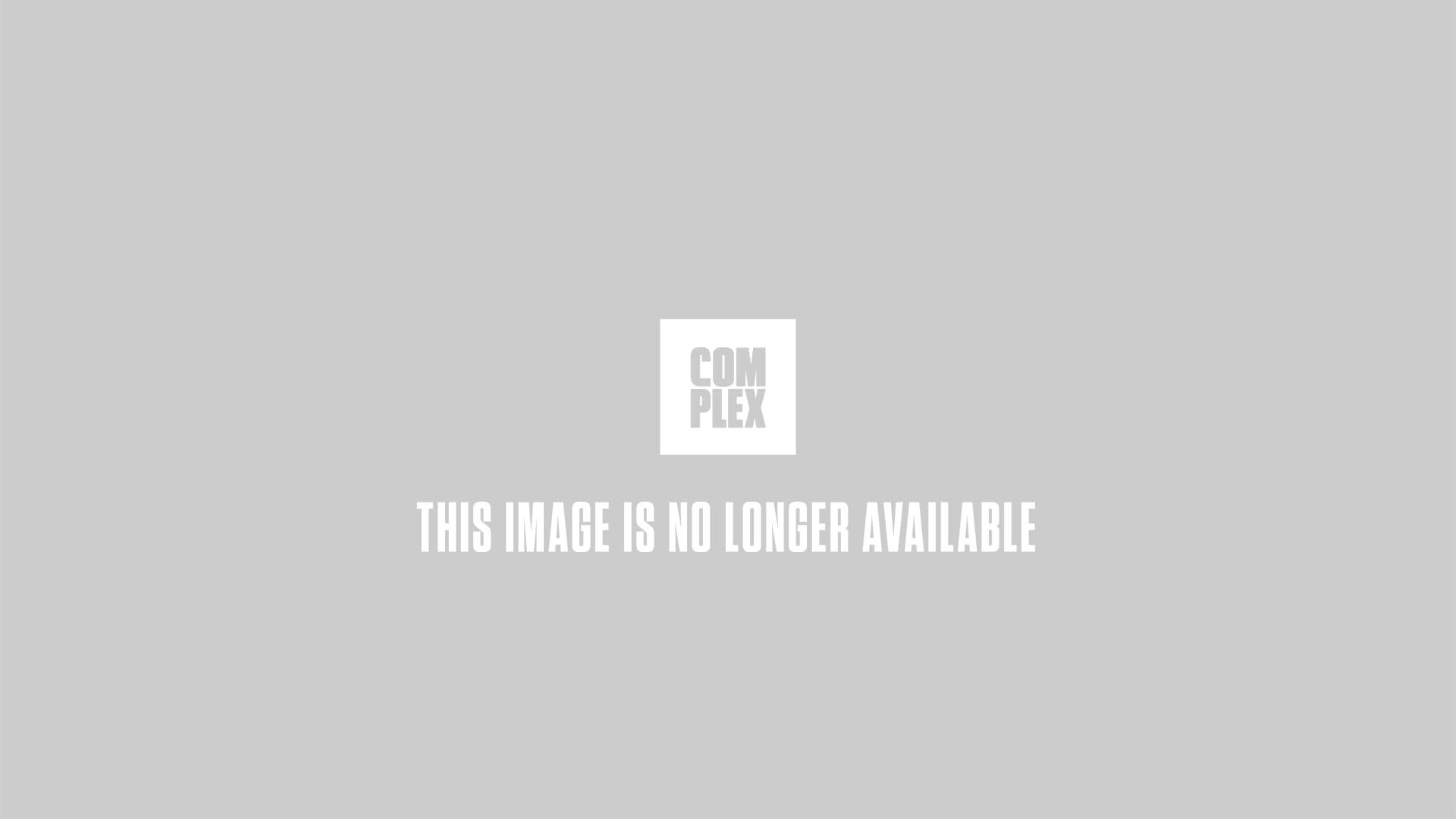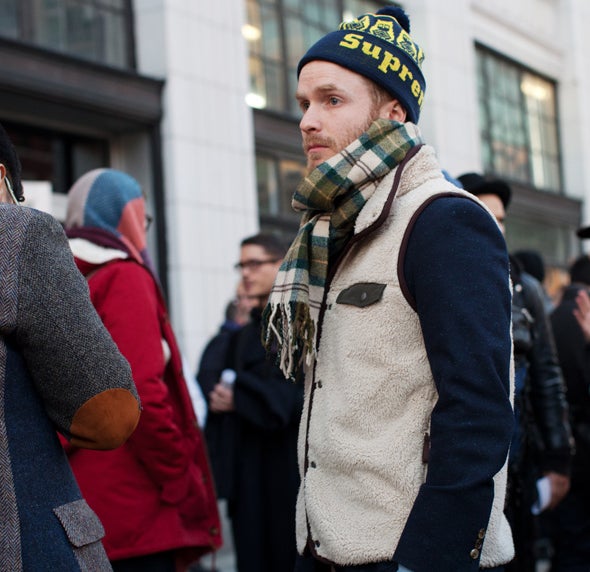
Meet Ebon Heath. He's a Berlin-based artist with roots in Brooklyn and Bali who has a quite well diversified portfolio. His experience ranges from designing for Triple 5 Soul and Bad Boy Entertainment in the 1990s (Biggie's "Life After Death" LP design? Yeah, that was Heath) to jewelry design, sculpture and now Complex covers.
The text-based pieces you see wrapping Beyoncé on the new cover and the inside spread are actually physical sculptures that Heath created—not 3D text renderings or fancy Photoshop designs. The pieces were hung, B did her thing, and legendary fashion photographer Thierry Le Goues went to work.
We caught up with Ebon Heath recently to discuss the past, present and future of his work, and to hear about his Complex cover-making experience. Check the interivew...
Complex: What brought you to where you are today as an artist?
Ebon Heath: In a past life, I founded a studio called ((( stereotype ))) that did a lot of design work within New York Hip Hop culture—specifically, music packaging, magazines, and fashion—in the 1990s. After that I moved on to found Cell Out, which was using design to save the world by creating media for ngo's, non profits, and social minded brands. I also taught design at Lehman College in the Bronx. Now i find myself in Berlin making my art, trying to stay free and make bigger dreams come true daily.
What other things have informed your current work?
When I was young I saw Caulder's Circus and that always stuck in my mind—the idea of making objects come alive. Growing up with parents who loved Jazz really taught me how to listen, and then later the poetry of Hip Hop made me see the words dance. I also have been inspired by the rich Carnival culture of Trinidad, and by one of my mentors [Carnival artist] Peter Minshall. Remix it all visually together and it sounds like me.

At first glance, it isn't easy to see that the words are actually a physical object. Why make type into a physical thing at a time when almost everything else is going digital?
The main goal of my work with type is to liberate our words from the page or screen so they can come alive and express the content they uniquely hold. I have always been inspired by the organic nature of Graffitti and its ability to give type a unique form dependent on its surrounding letters, expressive intent, and usually the amount of time writers have to create.
As much as I love digital, I don't think it can replace our hands, real light and shadow, our ability to walk around something and see it from a different angle. No matter how good the illusion or the synthetic version is, you cant beat the real thing. We have lost our sense of craft and the process of making things. Today, we can do it all by clicking a button instead of getting our hands dirty, practicing, and focusing all our energy on the details—like cutting out thousands of letters).
Working so much in the digital world made me miss the joyful mistakes and experiments that happen when you can touch something, or see something without it being plugged in. I was part of the last generation who were taught the analog while the digital grew up from floppy discs to terabytes. Technology is integrated in my working process, especially working with lasers now, yet my output is analog.
How were these pieces made?
Generally, I work with papers and plastics in my sculptures. For my jewelry, I use metals, plastics and leather. I originally was hand cutting my letters but now I use lasers which give me more freedom to work with different kinds of materials.
The majority of time working on these sculptures is spent on assembling all the elements. Tying hundreds of knots in nylon fishing string to make letters float invisibly or twirl like tornadoes. Designing these structures tends to be more of a engineering problem then fine art since my factors for a successful piece are balancing weight evenly, structural support and discovering the best use of materials for construction.
This specific project was quite surreal since I was in Bali working on my jewelry collection and came back to NYC just to build these 2 structures. I had a great crew of set designers (Amir and Jamie) that helped make all the production details come together, created a rolling design studio in the back of a rent-a-truck, and with little sleep we all made it come to life.

Your cover art adds a new dimension to the classic celebrity magazine cover—what are your thoughts about designing covers in an age when print magazines are struggling to stay relevant?
I love print, but magazines are now websites and covers are now thumbnails. As a kid, 12-inch record sleeves were like giant worlds I would stare at for hours—now its probably 12 pixels. Yet, to impact media, you still need images, and hopefully art, that will entice the viewer to come and take a look. We eat with our eyes more then ever before—a pop up ad, a billboard, bus stand, everything is filled with images and headlines, not just the newsstand anymore.
Print may die because we run out of trees to make paper, but the addiction we have to visual candy is only growing. Hopefully, however, if you add more quality to the printed word covers turn into posters and magazines will become collectible—more so than bookmarks online will ever be.
You worked with Thierry Le Goues and Beyoncé on this project—both big names in their respective industries—what was that like?
Thierry is a master of his craft and it was great to see his working process. You can tell he really enjoys what he does, and he gave my work so much attention and love. It's always beautiful to see your work through someone else's well crafted eyes—he painted with light on my letters.
Beyoncé is a piece of art and design on many levels. It's a fantasy come true to see her swimming in my words. Thanks to Brent Rollins and Complex for making it all happen.

What's it like for you to collaborate, or have your work interact with music, fashion or other art forms?
I think the idea of visually remixing all these different mediums is a common thread in all the different types of art and design I make. What does music look like? What do our words look like when they dance? How do we listen with our eyes?
My performance work explores this idea specifically by storytelling with sound, vocals, movement, fashion, engineering, light and a whole lotta words all dancing together. I think the idea of creating a live experience you can't download that can make you feel something in this moment where we have seen it all before is very exciting. What does it look like when the words of Talib Kweli or Iranian poet Forough Farrokhzad come alive and dance? My performance piece at the MADE Space in Berlin last year tried to illustrate a possible answer to that questions with a ballet of typography.
What other projects are you working on now and in the near future?
I am currently finalizing a new jewelry collection, working with a german porcelain company, designing a chandelier, exhibiting sculptures and installations and developing the next performance piece. I get bored easy so there is not much time to sleep—and words have so much to say.
Ebon Heath's website: listeningwithmyeyes.com

